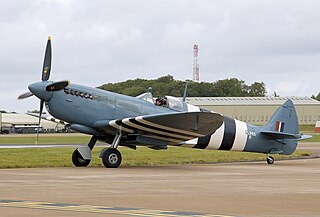 W
WA transformational growth in air reconnaissance occurred in the years 1939–45, especially in Britain and then in the United States. It was an expansion determined mostly by trial and error, represented mostly by new tactics, new procedures, and new technology, though rarely by specialized aircraft types. The mission type branched out into many sub-types, including new electronic forms of reconnaissance. In sharp contrast with the case during the pre-war years, by 1945 air reconnaissance was widely recognized as a vital, indispensable component of air power.
 W
WThe Alsos Mission was an organized effort by a team of British and United States military, scientific, and intelligence personnel to discover enemy scientific developments during World War II. Its chief focus was on the German nuclear energy project, but it also investigated both chemical and biological weapons and the means to deliver them.
 W
WOperation Backfire was a military scientific operation during and after the Second World War, which was performed mainly by British staff. It was part of the Allies' scramble to acquire German technology. With the consent of U.S. General Dwight D. Eisenhower, the operation was orchestrated by Major Robert Staver from the Rocket Section of the Research and Development branch of the Ordnance Office that was tasked in directing the effort to find and interrogate the German rocket specialists who had built the V-2. Since April 30 he had been in the Nordhausen area searching the smaller laboratories for V-2 technicians. Also Auxiliary Territorial Service (ATS) Junior Commander Joan Bernard played a role in this operation.
 W
WOperation Big was an operation of the Alsos Mission, the Allied seizure of facilities, materiel, and personnel related to the German nuclear weapon project during World War II. It was tasked with sweeping several targeted towns in the area of southwest Germany designated to the French First Army, including Hechingen, Bisingen, Haigerloch, and Tailfingen.
 W
WOperation Epsilon was the codename of a program in which Allied forces near the end of World War II detained ten German scientists who were thought to have worked on Nazi Germany's nuclear program. The scientists were captured between May 1 and June 30, 1945, as part of the Allied Alsos Mission, mainly as part of its Operation Big sweep through southwestern Germany.
 W
WThe Japanese destroyer Kikuzuki was one of twelve Mutsuki-class destroyers built for the Imperial Japanese Navy (IJN) during the 1920s. During the Pacific War, she participated in the Battle of Guam in December 1941 and the New Guinea and Solomon Islands Campaigns in 1942. Kikuzuki was destroyed during the invasion of Tulagi in May.
 W
WSidney Forrester Mashbir was a senior officer in the United States Army who was primarily involved in military intelligence. Born in New York, he served in the Arizona Army National Guard during the Mexican-American Border War. Mashbir then held several posts in intelligence positions, taking credit for catching the first German spy in the United States, before departing for on a four-year assignment as a language officer to Japan in 1920. He resigned from the army in 1923 in an attempt to execute his own master plan devised to extract intelligence from Japan in event of a war. His plan failed as a result of the Great Kantō earthquake in September 1923 and he was left bankrupt; he consequently returned to the US as an engineering businessman.
 W
WThe Military Intelligence Service was a World War II U.S. military unit consisting of two branches, the Japanese American unit described here and the German-Austrian unit based at Camp Ritchie, described partly in Ritchie Boys. The unit described here was primarily composed of Nisei who were trained as linguists. Graduates of the MIS language school (MISLS) were attached to other military units to provide translation, interpretation, and interrogation services.